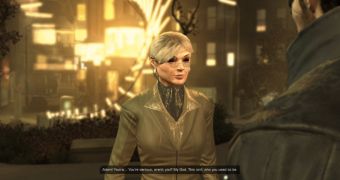Deus Ex: Human Revolution has quite the burden of expectations to bear, in its position as the spiritual successor and timeline prequel of the original game in the series, and one of its biggest accomplishments is coming very close to being perfect in terms of style.
I am not talking about the graphics quality, which (especially when playing on a good PC) can leave something to be desired (the game needs to take into account the limitations of the Xbox 360 and the PlayStation 3) but about how the team of designers at Eidos Montreal manage to create a distinctive style for their game.
It manages to pay homage to the way the first Deus Ex portrayed its locations and its characters, while at the same time exuding beauty from almost every pore, from the complex motifs that adorn the leather trench coat, itself a reference to what J.C. Denton had on, that Jensen so effortlessly wears to the design of the buildings in gritty Detroit and futuristic Chinese location.
There are some small missteps, like the lack of complex textures on some objects and the relatively low quality of character faces, but, oddly enough, even these for me fit into the Deus Ex aesthetic, that of a future world that strips away some elements of humanity while giving individuals more ways of exploring their own destinies.
The first Deus Ex is hard to look at now, even if the player uses resolution and detail enhancement mods, but Human Revolution manages to get the same slightly blocky-yet-cool vibe going and the engine, despite occasional stutters, does justice to the feeling created by the original.
I can only hope that at some point the developers at Eidos Montreal launch modding tools for their game and that the community then remakes both the first Deus Ex and the Invisible War sequel using them, giving modern gamers a chance to replay the entirety of the series.

 14 DAY TRIAL //
14 DAY TRIAL //